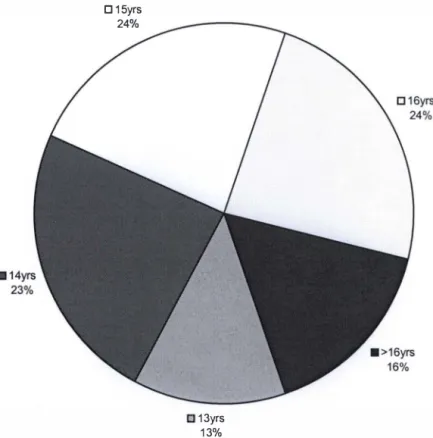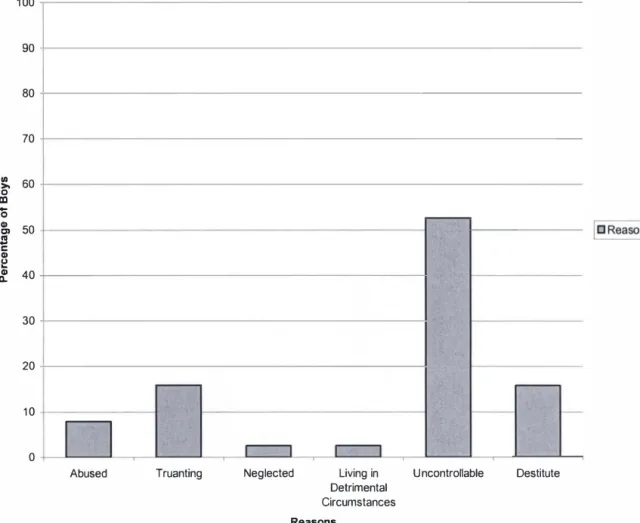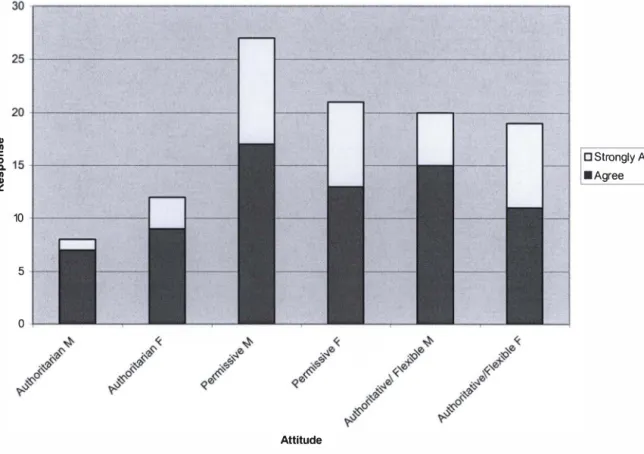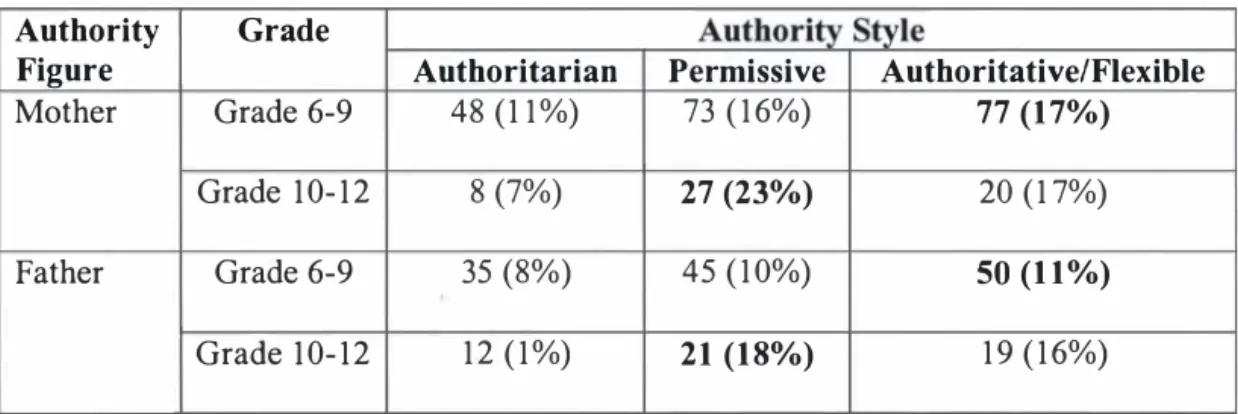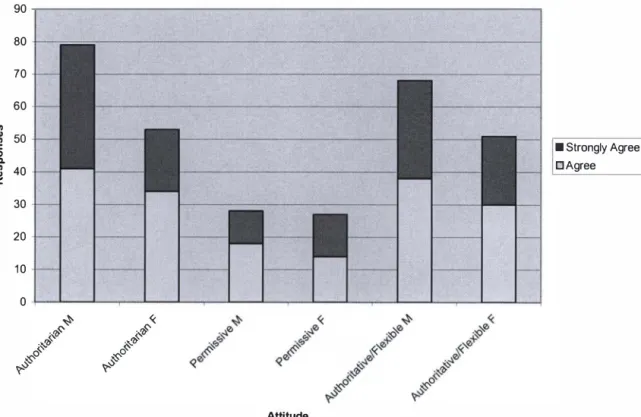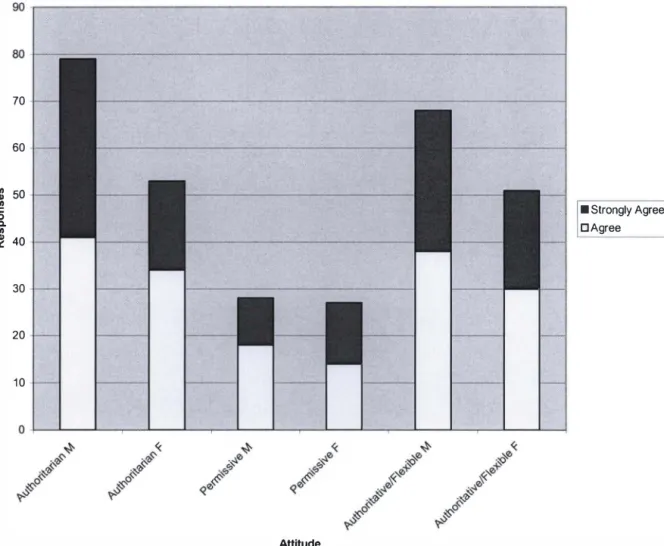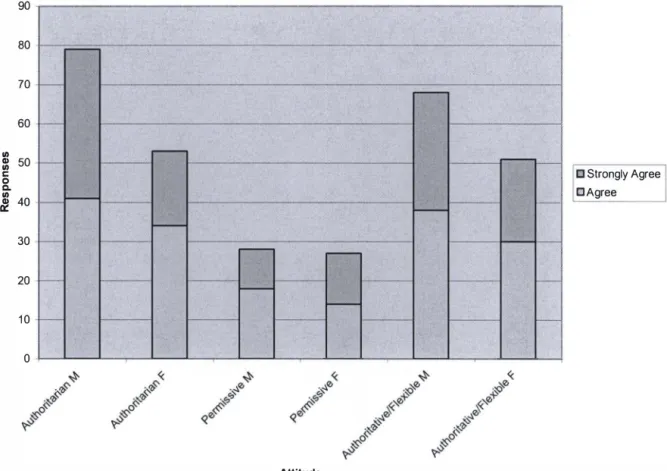The purpose of the research was to investigate boys' attitudes towards authority and to determine whether there is a difference in attitudes towards authority. Adolescents from single-family households had a mother who was authoritative/flexible and a father who was authoritarian.
BACKGROUND
In the researcher's work with adolescents over the last two decades, as an educator at secondary schools, a number of problems associated with 'growing up' have been observed. Boys who have come into conflict with authority in some way are taught coping skills to help them deal with authority - authority at home, authority in the environment they live in and authority in school.
RATIONALE FOR THE STUDY
Students' negative attitude towards authority and the resulting conflict can have a negative impact on the learning process. The purpose of this study is to determine the attitudes of young people in Boys' Town, Tongaat, towards authority.
AIMS OF STUDY
The type of family (eg single parent, nuclear family, extended family) from which the adolescent boy comes influences his attitude towards authority.
THE RESEARCH FOCUS
The focus will be on adolescent boys' attitudes towards authority and conflict and the potential changes that may arise in their interaction with it. The program is primarily oriented toward providing developmental care within a residential setting for adolescent boys who are exhibiting challenging behavior within their families and environments and who are then at risk of entering deeper into the justice system.
RESEARCH METHODOLOGY
STRUCTURE OF THE RESEARCH STUDY
Chapter five presents findings, data analysis and interpretation in light of the critical research questions. Chapter six presents the discussions, conclusions and recommendations based on the findings of the study.
INTRODUCTION
CONCEPTION OF ATTITUDE
These readiness states are relatively stable, but they are modifiable and subject to change (Halloran, 1967). They are not merely latent states of readiness awaiting the presentation of a suitable object for their activation.
ATTITUDE FO RMA TION
The main actors in the socialization process are parents, siblings, relatives, friends, teachers and the media. They develop as we develop, in interaction, in relationships with other people, especially with significant others in the socialization process.
ATTITUDE OF ADOLESCENTS
He believes it is important to realize that the first years in the socialization process are of great importance and that an individual's group relationships play an important role in shaping his attitude. Print media in the form of books, magazines and newspapers and radio should also be involved.
MEASUREMENT OF ATTITUDES
According to Allport (Fishbein, 1967), the application of psychophysical methods was the most important event in the history of attitude measurement. The advantage of using this method in the study is that a deeper understanding of adolescents' attitudes toward authority will be developed.
SUMMARY
In one photo, the child involved was white; in another photo (identical in all other respects) the child was a Negro. It is reasonable to expect that whether the teacher was approving or disapproving actually represented a projection of the child's own attitude toward a Negro, as opposed to his attitude toward a white child (Kuhlen, 1952) .
INTRODUCTION
Many of these studies have examined attitudes toward a variety of significant sources (or potential sources) of authority for youth, such as the police, the law, teachers, and the military. One of the earliest of these studies was conducted by Rigby and Rump (1 979), who noted that each of the attitudes toward authority scales correlated positively and. However, a recent study by Rigby and Black (1 993) with Australian Aboriginal preadolescents indicated significantly less positive attitudes towards parents and the police.
P ARENTING STYLES AND CONCEPTIONS OF PARENTAL AUTHORITY
When parents did not provide a reason for the rule, all subjects indicated that the rule was not legitimate and that peers had no obligation to follow the rule. When parents justified the rule based on a friend's marijuana use, most adolescents indicated that the rule would be legitimate and that peers should follow the rule. Significantly more adolescents also judged that it would be right if parents forbade the friendship and that peers should follow the rule because a friend drinks beer compared to a friend who smokes cigarettes (Tisak, Tisak & Rogers, 1 994).
ATTITUDES TOWARDS AUTHORITY OF ADOLESCENTS UNDER FAMILY SUPERVISION
How do they feel about the authority of the juvenile judge and the family supervisor. Twenty-five adolescents were of native Dutch origin, and eleven of them had a foreign background (ethnic minorities). How do these youths view the authority of the judge compared to the family supervisor.
SOUTH AFRICAN ADOLESCENTS' EXPLANATIONS FOR JUVENILE DELINQUENCY
More often, they attribute their obedience to the supervisor's expertise or to the rewards the supervisors control. They were asked whether these authorities should be allowed to act in the interests of young people against their will. Two-thirds of young people said they would raise their children in a moderate way, similar to an authoritative style.
SUMMARY
The existence of this dimension in the South African data is not surprising given the large economic and social disparities in South African society. It will therefore be interesting to find out whether children in South Africa reflect similar attitudes towards authority as those in other countries. The next chapter discusses the methodology that will be followed to conduct a similar study in a South African context.
INTRODUCTION
RESEARCH DESIGN
POPULATION AND SAMPLE
In Boys' Town, boys are heavily involved in decision-making about their affairs. In each case, the boys were placed in Boys' Town after a social worker investigated the problem. The boys had the choice of being placed in the Boys' Town or staying in their home.
RESEARCH INSTRUMENT
- THE USE OF THE QUESTIONNAIRE
- OBSERVATION
- THE USE OF DOCUMENTARY SOURCES
- THE SEMI-STRUCTURED INTERVIEW
This study used multiple-choice and scaled questions to construct the questionnaire. In this study, the researcher had to rely on general observation of the subjects and their interaction with the authorities in Boys' Town, Tongaat. However, the responses could provide a check on the accuracy of the survey (Moser & Kalton, 1 977).
DATA ANALYSIS
The core of the interviewer's job was to locate the sample members, obtain the interviews, ask the questions, and record the answers (Sudman, 1966). The researcher started the interview by explaining who she was and what the purpose of the study was.
SUMMARY
PRESENTATION AND ANALYSIS OF RESULTS
- ATTITUDE TO AUTHORITY BY ADOLESCENTS OF DIFFERENT GRADES
Out of a total of 450 possible responses (30 respondents multiplied by 1 5 items) 77 responses were that the mother was authoritarian/flexible, 73 responses were for the permissive mother, and 48 responses were for the authoritarian mother. Out of 1 20 possible responses, 27 responses were in favor of the permissive mother, 20 responses were in favor of the authoritarian/flexible mother, and 8 responses were in favor of the authoritarian mother. In response to attitude towards Jather, 2 1 responses were in favor of Jather being permissive, 1 9 were in favor of Jather being authoritarian/flexible and 1 2 were in favor of Jather being authoritarian.
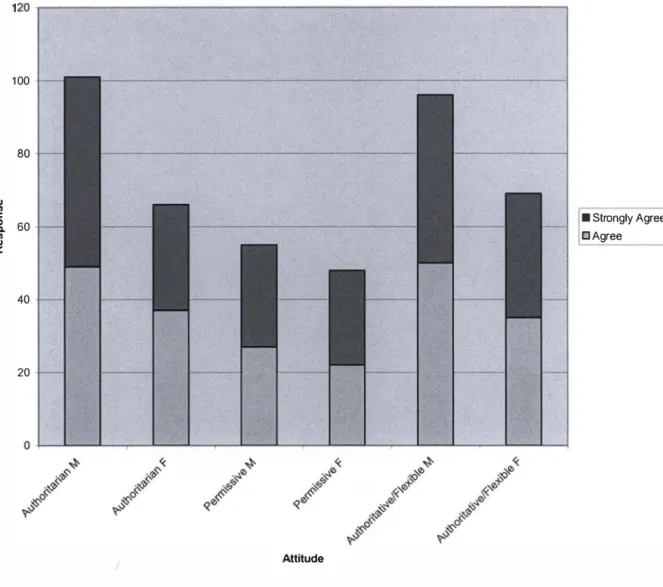
ATTITUDE TO AUTHORITY BY ADOLESCENTS FROM DIFFERENT RACES
ATTITUDE TO AUTHORITY BY ADOLESCENTS FROM DIFFERENT PARENTAL ACADEMIC BACKGROUNDS
In response to attitude towards mother, there were 6 9 responses for tolerant out of a total of 420 responses (28 x 1 5). In response to attitudes toward father, there were 53 responses for authoritative/flexible, 52 responses for permissive, and 37 responses for authoritarian. In their response to attitude towards mother they indicated 27 answers for authoritative/flexible, 22 answers for permissive and 1 5.
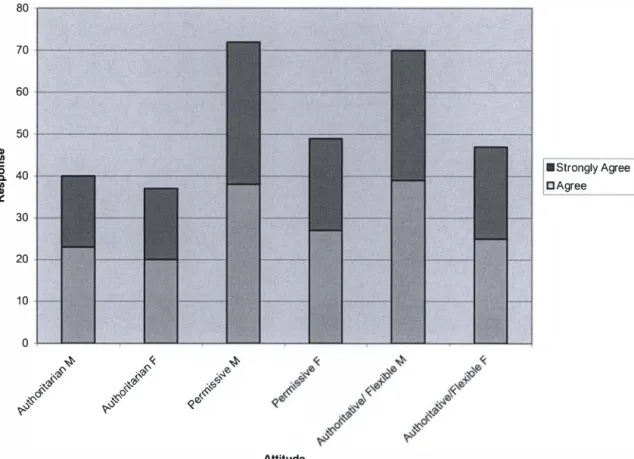
ATTITUDE OF ADOLESCENTS FROM DIFFERENT FAMILY STRUCTURES
In response to their attitude toward father, they indicated 17 responses for authoritarian, 16 responses for authoritative/flexible, and 12 responses for permissive. In response to attitudes toward the father, they indicated 28 responses for authoritative/flexible, 27 responses for permissive, and 17 responses for authoritarian. In response to attitudes toward the father, they indicated 1/4 responses for authoritative/flexible, 8 responses for permissive, and 5 responses for authoritarian.
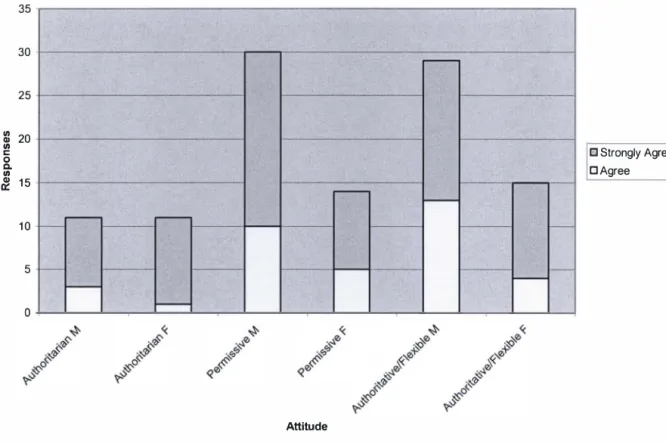
PRESENTATION AND ANALYSIS OF RESULTS
When the boys were asked about the authority at Boys' Town, Tongaat and whatnot. motivated them to obey, they responded as follows: At home, some boys had to travel long distances to go to school. The boys felt confident that they had the “anger management skills,” “the breathing exercises,” “the greeting skills.”
SUMMARY
With the kombi dropping and picking up the boys at their respective schools and the principal of Boys' Town, Tongaat is told if any of the boys are asleep. They also believe that the support they receive in Boys' Town Tongaat further develops their attitude towards authority.
SUMMARY OF FINDINGS
Does the type of family structure the adolescent comes from influence his attitude toward authority? Boys from nuclear families viewed mothers as as permissive and authoritative as they were flexible, and fathers as permissive.
DISCUSSION OF FINDINGS
Twenty-two of the boys (more than 50% of the sample population) were in the boys' town, Tongaat, because they had been uncontrollable in their previous settings. However, in general, teenagers in the boys' town, Tongaat, saw the mother figure as authoritative and the father figure as flexible authority. Teenagers in Boys City, Tongaat, are in a system that is conducive to their holistic development.
CONCLUSION
An all-inclusive social skills program runs throughout the year. The basic skills they learned, such as "greeting skills" and "anger management", enabled their emotional growth.
RECOMMENDATIONS
Parents and/or caregivers need to learn how to discipline and reward their children. Adolescents who defy authority should be enrolled in behavior modification programs designed jointly by those in authority at school and at home. Behaviors that need to be developed or extinguished should be identified and the assessment should be based on common recurring behaviors rather than individual incidents.
LIMITATIONS OF STUDY
Certain desirable tokens or privileges must be reserved for youth who have achieved results in the system.
SUMMARY
The aim of this study will be achieved if schools and communities can study the 'rehabilitation programs' adopted by Boys' Town, Tongaat and design individualized programs that will instill a more positive attitude towards authority in learners. The similarity between attitudes towards personal and impersonal types of authority among adolescent school children.
APPENDIX 1
2. Whenever my mom told me to do something growing up, she expected me to do it right away, no questions asked. 2. Whenever my dad told me to do something growing up, he expected me to do it right away, no questions asked. Growing up, my father often told me exactly what he wanted me to do and how he expected me to do it.
